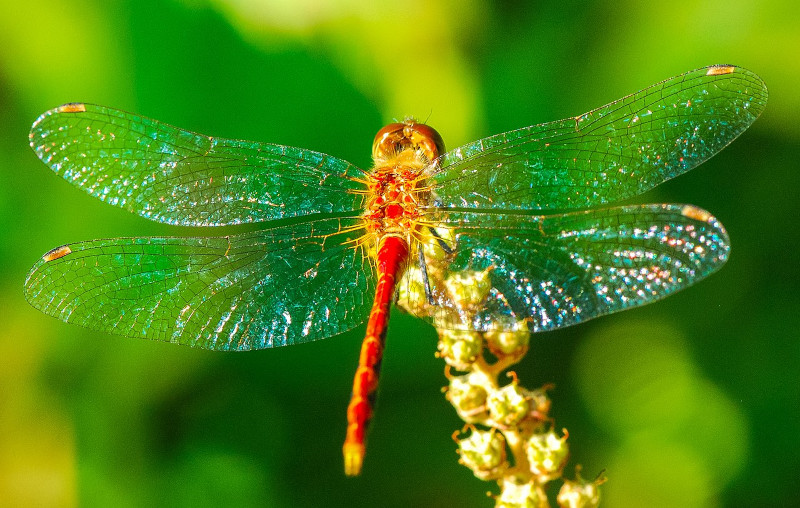
Autumn Meadowhawk Facts
- This dazzling creation of Nature and evolution most frequently goes by the unusual and distinctive common name of Autumn Meadowhawk. Yet, it also hs a few other general titles. These include the very similar term of yellow-legged meadowhawk.
- Among scientific professionals, however, it holds another tag it’s perhaps better known by. That’s its technical moniker. Unfotunately, as such epithets often are, it’s a difficult one for the layperson to pronounce. It has the official name of Sympetrum vicinum.
- The remarkable invertebrate received that hard to utter designation due to the efforts of Hermann August Hagen. The highly respected German entomologist accomplished the first recognition of it as a separate and distinct species in the year 1861.
- Fortunately, the Autumn Meadowhawk appears to be maintaining a population base that’s both stable and sufficient. That pleasant state also seems to hold true across the entirety of its range. The IUCN therefore presently lists the insect as Least Concern.
- The wonder of Nature nevertheless still faces several potential threats to its continued existence. Like all forms of life on earth today, most of these stem from the actions of man. They include the dual threats now posed by habitat loss and climate change.
Related Articles
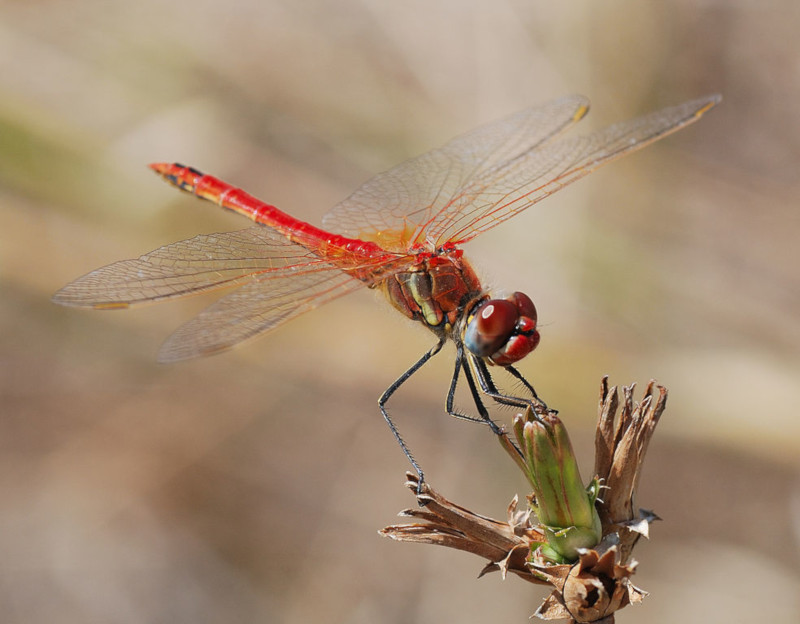
Red Veined Darter
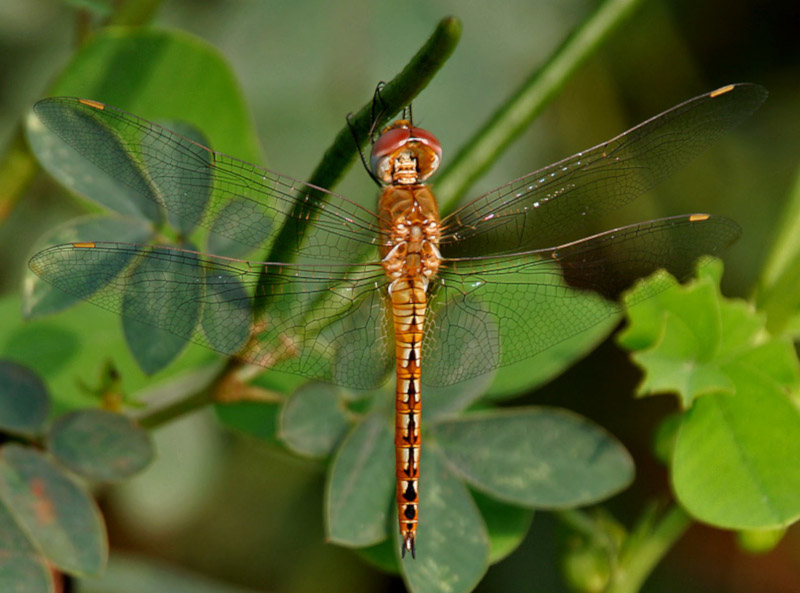
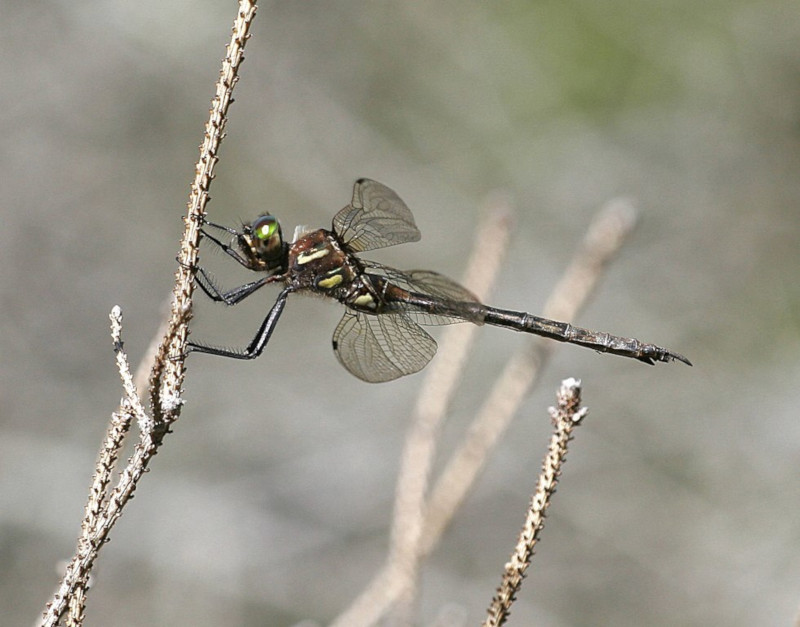
Hines Emerald Dragonfly
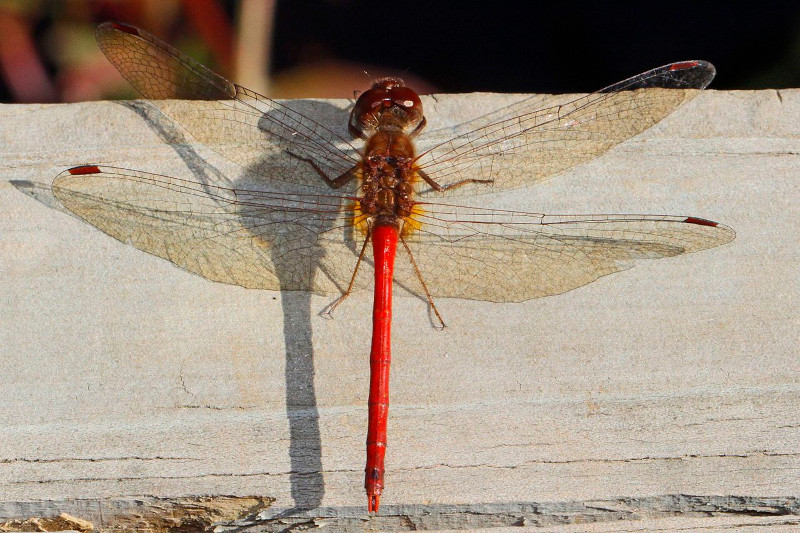
Autumn Meadowhawk Physical Description
The stunning Autumn Meadowhawk presents of dazzling form to those fortunate enough to encounter it. Yet, it does so purely in terms of its impressive visual appeal. That’s due to the fact that, as dragonflies go, it’s a comparatively small member of its amazing Family.
It also follows a pattern of development common among many species around the world. That’s in the fact that it displays a certain degree of the physiological characteristic of sexual dimorphism. In its case, though, this manifests purely in terms of its appearance.
Mature adults of both sexes attain the same general physical dimensions. The body length averages approximately 1.2 – 1.4 in (3.0 – 3.5 cm). Wingspans also measure the same in both genders. The species achieves a mean width in this aspect of roughly 2 in (5 cm).
Those same wings themselves merit their own appreciation for their remarkable construction. Each develops as primarily clear in color. Yet, a small amount of color does appear. A small patch manifests at the base of both wings, ranging from orange to yellow.
In most cases, though, it’s the small body of the awesome Autumn Meadowhawk that receives the most widespread attention. It’s also the aspect of its form that presents the gender-based differences. That’s because males and females present differing color schemes.
Mature males show a dark brown to black on their thorax and face. yet, the abdomen of this sex displays the brilliant red shade. Females, however, present a brown thorax with a brownish-red abdomen. In both genders, though, the legs show a brilliant shade of yellow.
- Kingdom: Animalia
- Phylum: Arthropoda
- Class: Insecta
- Order: Odonata
- Family: Libellulidae
- Genus: Sympetrum
- Species: S. vicinum
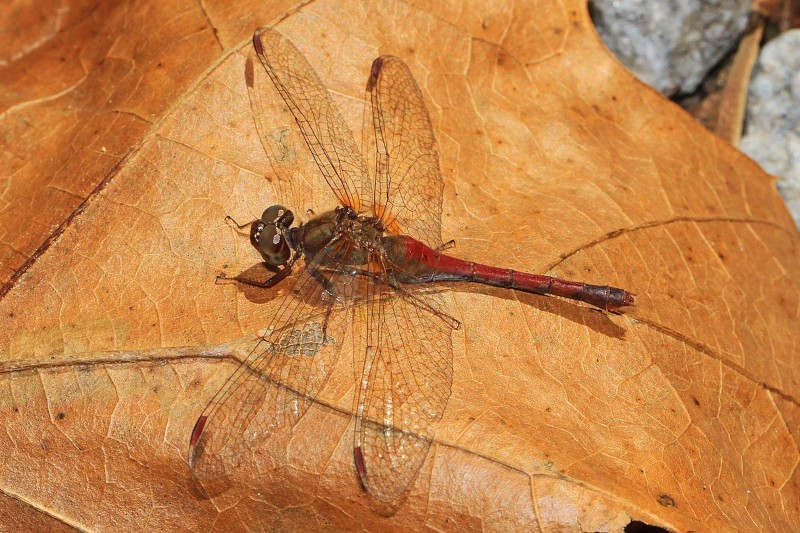
Autumn Meadowhawk Distribution, Habitat, and Ecology
The eye-catching Autumn Meadowhawk evolved as native to a comparatively large swathe of the earth’s surface. Given its nature, though, the precise location of that zone of habitation comes as no surprise to most people. It developed as endemic to parts of North America.
Yet, within that greater territory, its range is somewhat broken. It mainly inhabits the eastern sections of the United States, and much of southern Canada. It also inhabits much of the Great Plains region, too. Another population dwells in Washington and Orgeon.
This remarkable product of evolution displays decidedly strong and clear preferences regarding its choice of habitat type. Sadly, though, that very nature tends to limit its possibilities. That’s especially true today, as man spreads out across most of its native range.
The intrepid invertebrate most strongly prefers to make its home in permanent areas of pools, lakes, marshes, bogs, and pools. It also, though less frequently, resides in and around slow-moving streams. In such instances, however, these usually lie within a forest.
Fully mature adults of the Autumn Meadowhawk typically fly between the months of late July to early November in most parts of their range. At this time, they feed voraciously as carnivores on a wide range of small insects. These include such species as ants and flies.
After mating, females lay eggs near the shoreline of their habitat. Eggs are typically laid individually in differing locations. These generally hatch the following spring. Adult males, though, usually perish soon after mating, with females following after laying their eggs.
Species Sharing Its Range

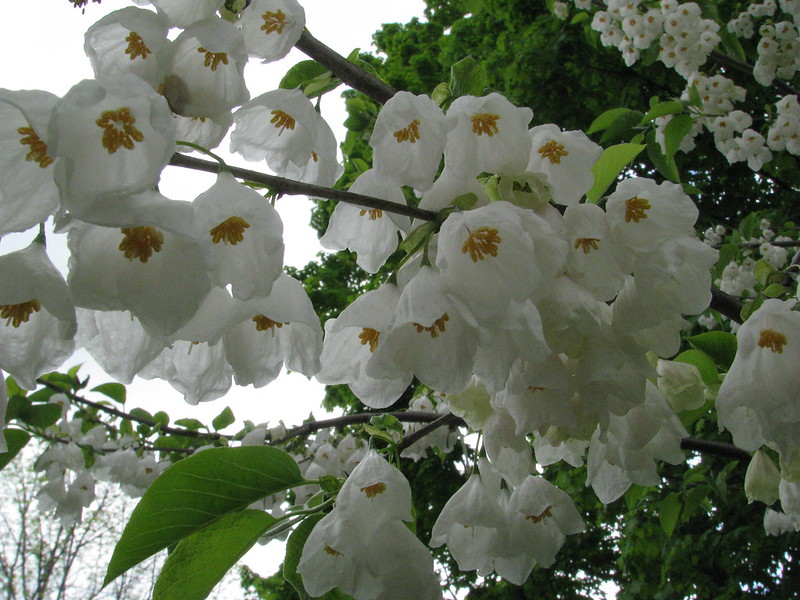

Brown Recluse
Check out out our other articles on 5 Beautiful Black Sea Species, Ribbon Seal, Great Barrier Reef, Purple Frog, Appalachian Avens, Great Barracuda, Scarce Swallowtail, Jamaican Iguana









Leave a Reply